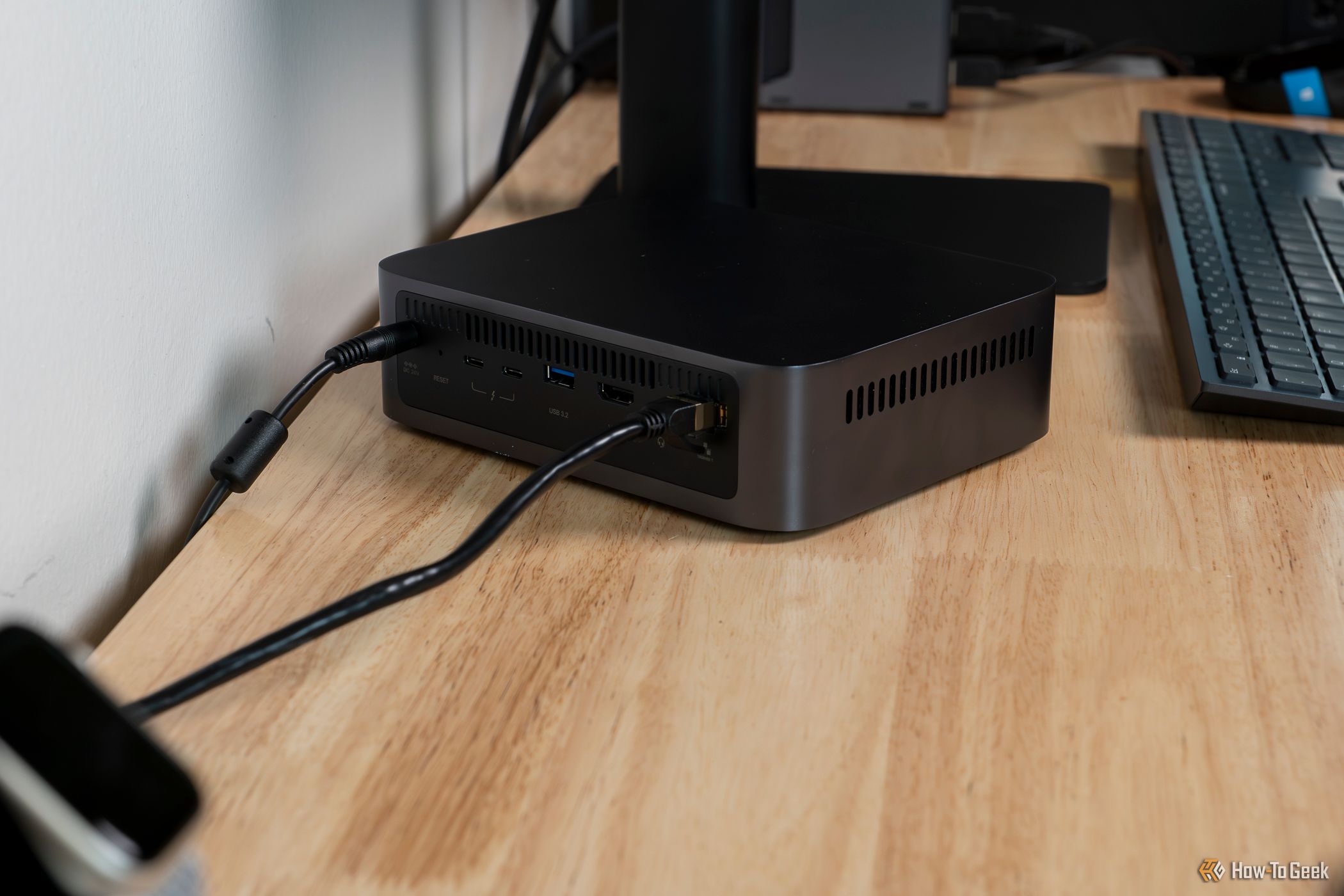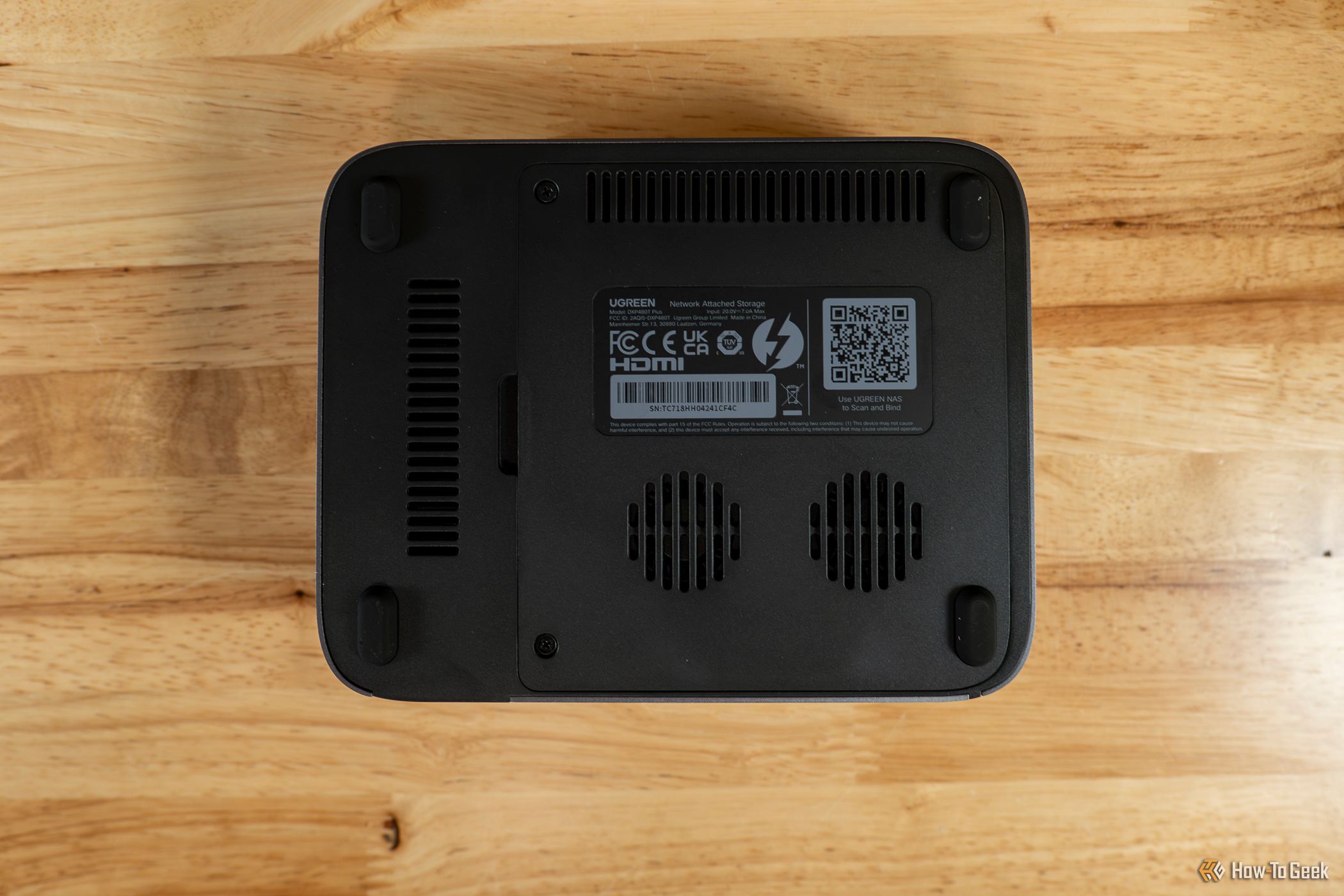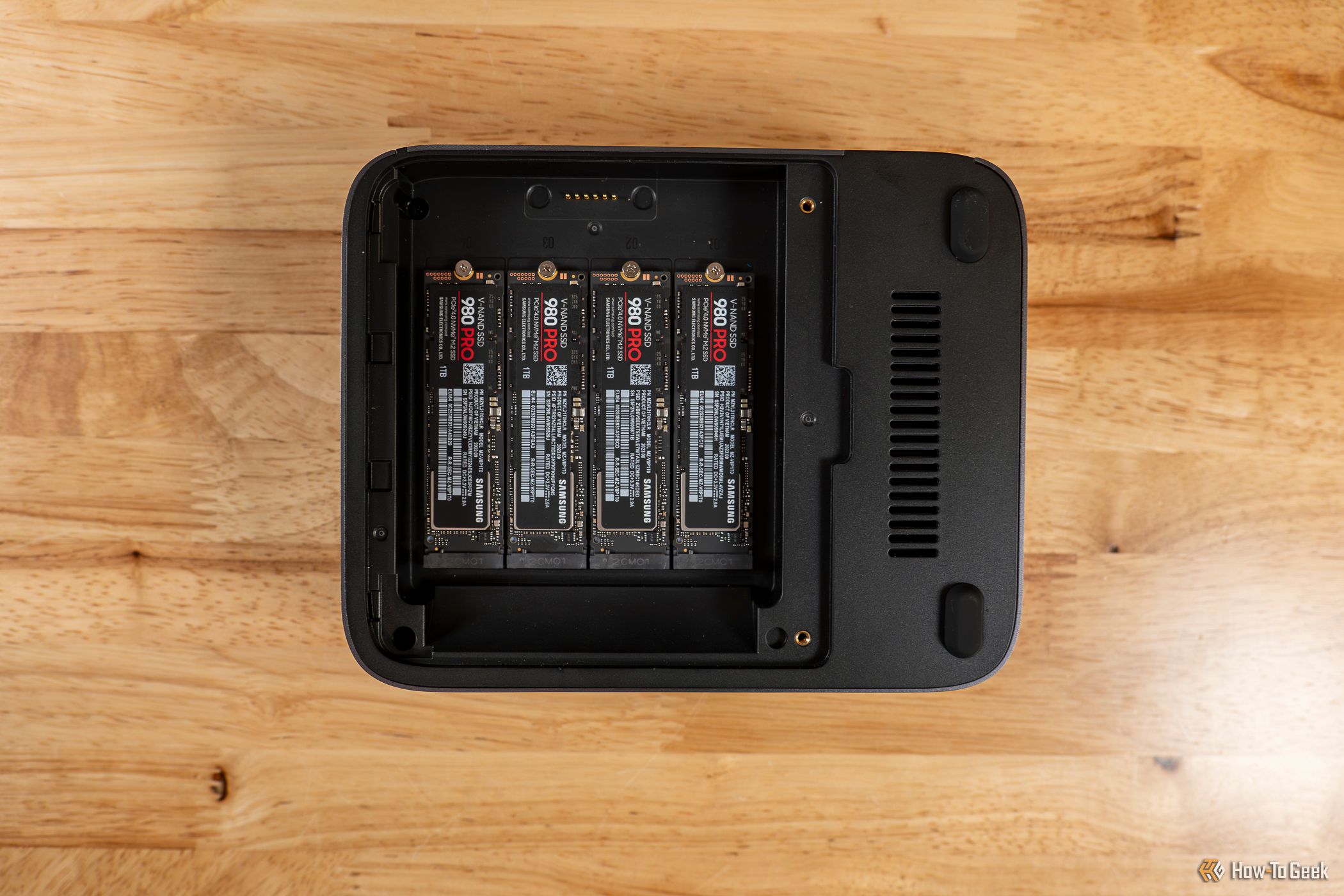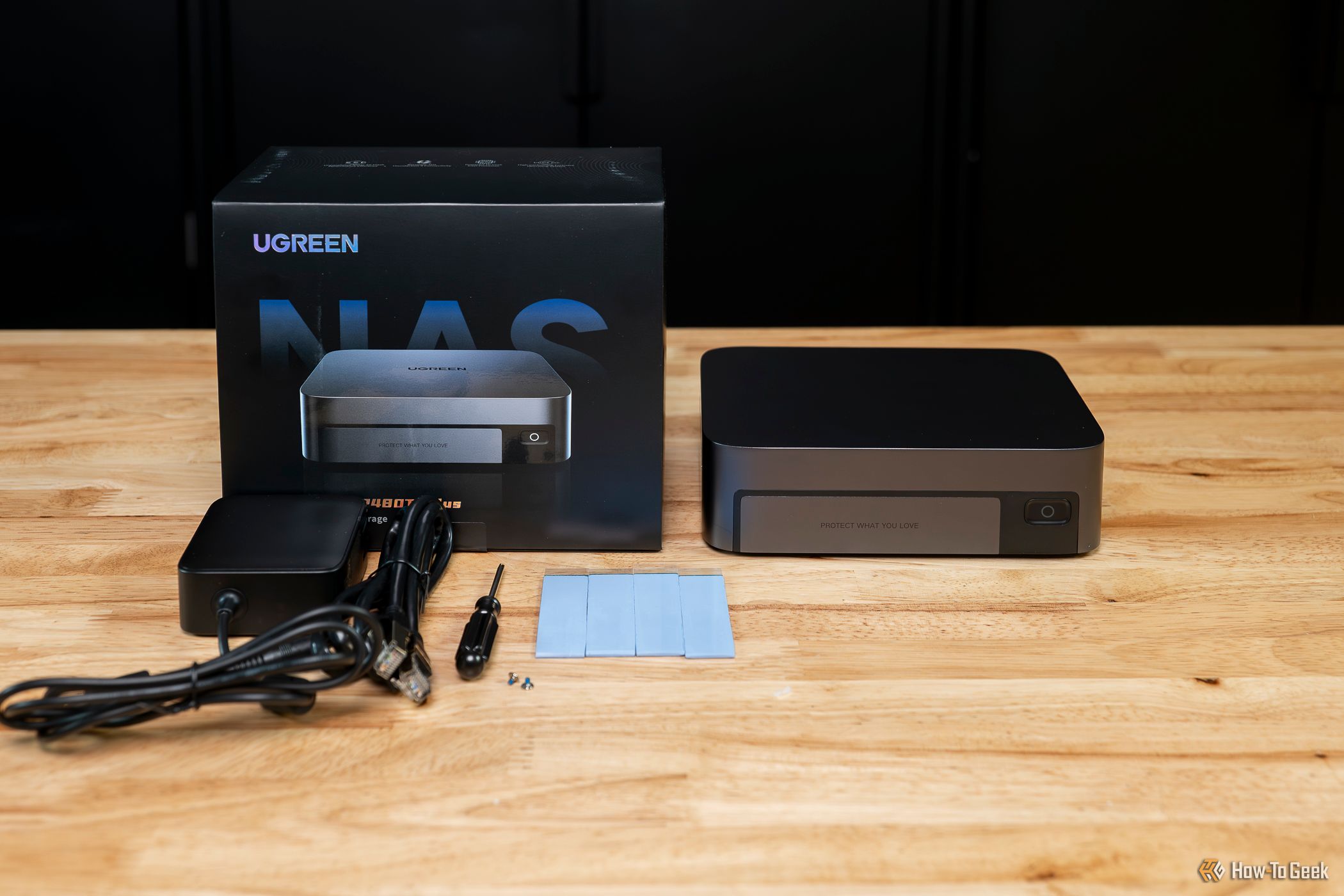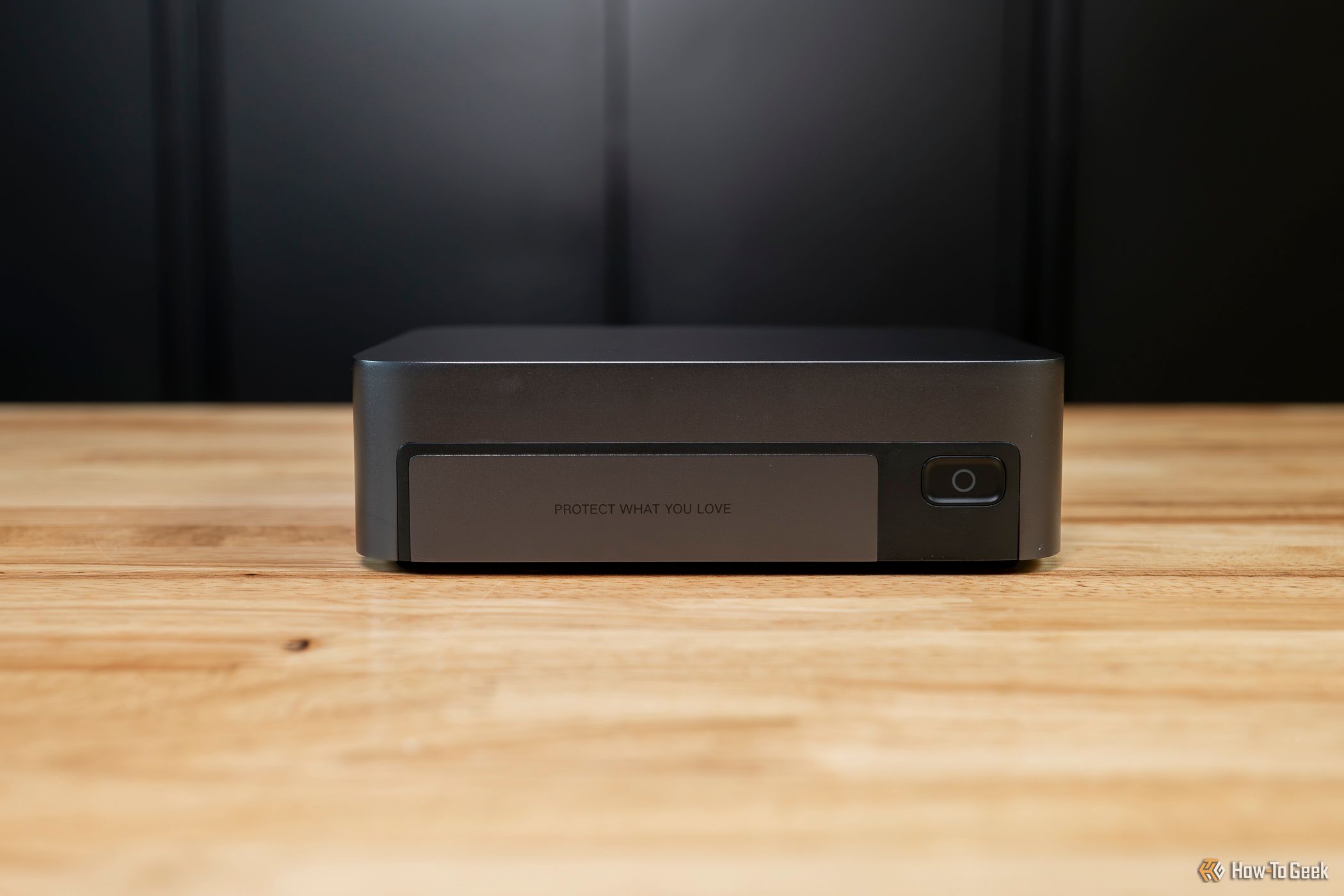Key Takeaways
- The Ugreen NASync DXP480T offers impressive hardware with Wi-Fi capability but lacks user-friendly software.
- The NASync’s all-SSD setup results in ultra-fast networked storage but comes at a higher cost.
- The UGOS operating system could use significant improvement to compete with more user-friendly options like Synology’s offerings.
With an intent to shake up the NAS industry, the Ugreen NASync line of networked storage devices all pack a pretty powerful punch for the price. I’ve been using the Ugreen DXP480T Plus NAS for the past few weeks and have really enjoyed its all-SSD setup for lightning-fast data transfers. However, the operating system could use some upgrades to make it a bit more user-friendly.
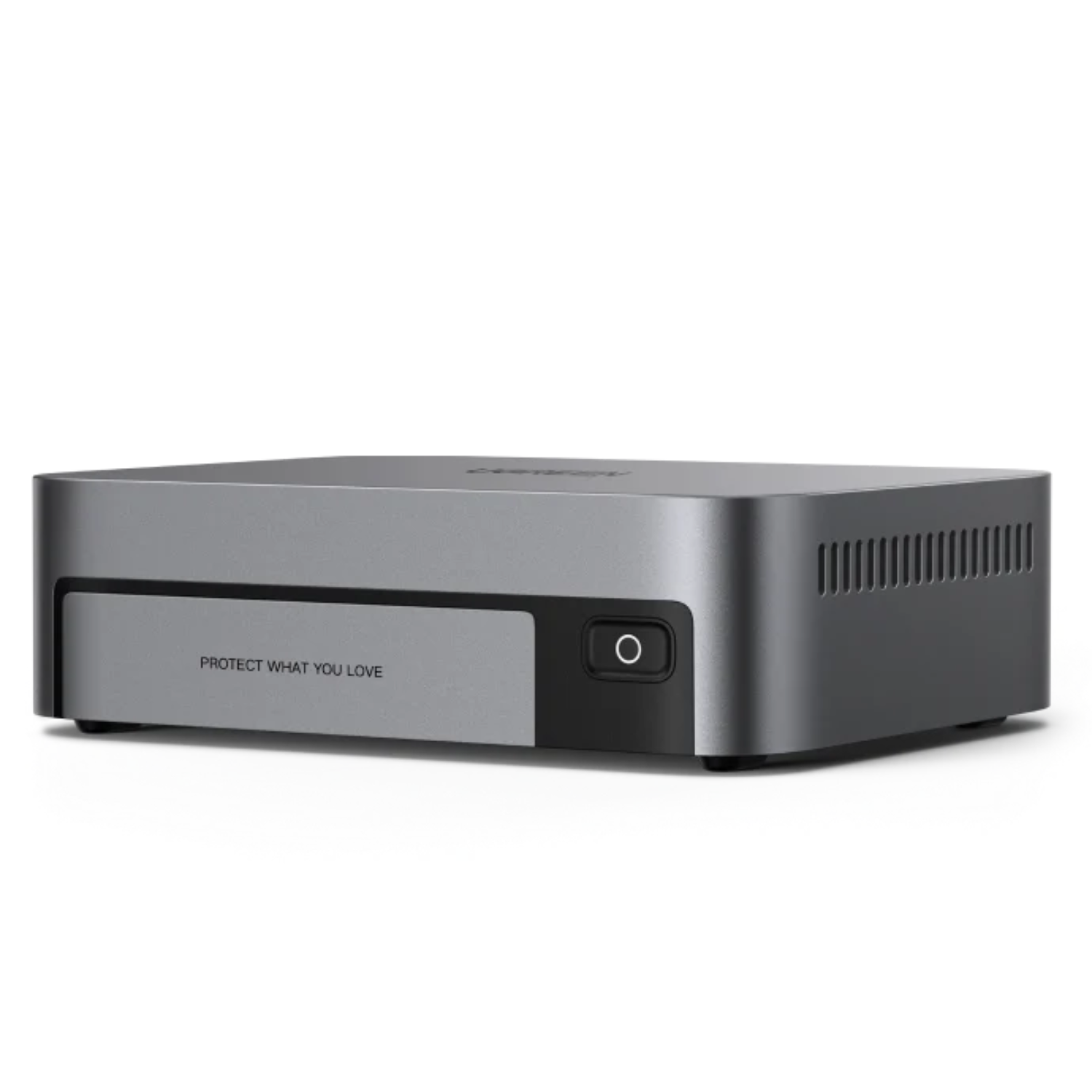
Ugreen NASync DXP480T Plus
The Ugreen NASync DXP480T Plus all-SSD NAS system offers impressive specs, ample I/O, and great capabilities. You’ll find a 10GbE port on the back, dual Thunderbolt 4 ports, and four M.2 NVMe SSD slots here. With a 12th Generation Core i5 processor and up to 32GB of user-upgradable RAM here, there’s also plenty of power to use it as a home theater system, which is aided by the 8K HDMI port that’s built-in.
- Built-in 10GbE and Wi-Fi 6 Networking
- All-SSD storage is super fast
- More than enough power to run Plex and other services at the same time
- User-upgradable RAM
- UGOS is complicated to set up and not user-friendly
Pricing and Availability
The Ugreen NASync DXP480T retails for $999, though during the Kickstarter campaign, it was available for as low as $479.
A NAS With Wi-Fi? Yes, Please
Network-attached storage systems haven’t seen many useful upgrades in recent years. Yeah, most have at least a single NVMe slot for cache now, and the onboard networking card has been upgraded in many to be either 2.5GbE or 10GbE, but that’s about it. Ugreen wanted to shake things up a little more with its NASync DXP480T Plus.
Designed as an all-SSD NAS, this storage server is one that prioritizes both form and function. While Ugreen trimmed down the exterior to be a smaller, sleeker package than I’m used to seeing with desktop storage servers, the newcomer brand to the NAS scene also added some additional functionality. Namely, Wi-Fi. Yes, a NAS with Wi-Fi. This might be sacrilegious to the purists out there, but I find it to be actually pretty great.
While it’s held back by Wi-Fi 6, the overall performance of file transfers over Wi-Fi was actually pretty impressive. Wired on my Gigabit network (though the DXP480T Plus is capable of 10GbE networking), I was seeing data transfer rates of up to ~115MB/s, which is essentially a fully saturated Gigabit line. Over Wi-Fi, speeds slowed down to about 60% or so, peaking at around 65-70MB/s transfer rates.
Why do I love that this NAS has Wi-Fi? Well, it means that I didn’t have to leave it in my server closet to function. While that works for me, because I have separate and dedicated closets for both networking and server infrastructure, not everyone does. And, if your modem/router is sitting on the entertainment center behind a TV, then keeping a NAS right there isn’t always the best option. Instead, you can place the DXP480T Plus anywhere that it’s within decent Wi-Fi coverage and still enjoy the benefits of having a fully network-attached storage system.
More Horsepower Than Most Low-End PCs
When it comes to powering the DXP480T Plus, you’ll find a 12th Gen Intel Core i5 processor here. This isn’t a low-end ARM chip, or even an N-series CPU either. It’s a full-fledged x86 i5-1235U chip with 10 cores and 12 threads, as well as having Iris Xe Graphics onboard. The built-in graphics is actually quite useful if you plan to leverage the 8K HDMI output here to turn the NAS into a media server. With the built-in HDMI, you could plug the NAS right up to your TV to play media that’s stored directly off the unit without having to install something like Plex or Emby.
However, the extra horsepower means you can also leverage functions like Docker to run all kinds of smart home automation software, server programs, and even virtual machines without slowing down the system. Not only does it have a laptop-grade processor, but the RAM is also upgradable. My unit has just 8GB of RAM, which has been plenty for my use. But, with a few simple screws, you can upgrade to a maximum of 32GB of DDR5.
Flanking the powerful system and HDMI port, you’ll also find a slew of other options for I/O. Namely, dual 40Gb/s Thunderbolt 4 ports as well as a USB 3.2 Gen 2 port, capable of 10Gb/s transfer rates. While the USB-A port is something I expected to be something you’d use only to transfer data to the NAS, I held out hope that the Thunderbolt 4 connection would be bidirectional. The thought of having this as both a DAS (direct attached storage) and NAS was quite appealing to me. This would have given ultra-fast data transfer rates to a physically connected device, while the wired/wireless networking would be for all other systems.
Sadly, the Thunderbolt 4 port is also used exclusively to offload content to the NAS, not for going both ways. While it’s nice to have this here, I wonder just how useful Thunderbolt is on a mid-range NAS, and I can’t help but think that maybe this adds extra cost for little benefit.
In the many years that I’ve run network-attached storage servers of various styles and sizes, I’ve never once thought, “I really need to hook up this external drive directly to my NAS and offload the contents there.” However, I have often wanted a way to transfer data from my desktop or laptop to the NAS faster than standard networking would allow.
An All-SSD Array Makes for Ultra-Fast Networked Storage
While most network-attached storage devices are based around older platter hard drive technology, the DXP480T Plus leverages the latest and greatest tech for its storage. With four M.2 NVMe slots, this NAS is off to the races when it comes to transfer speeds. These SSDs have theoretical transfer rates in the multiple gigabytes per second range, which means that you can easily get into saturating the 10GbE networking port on the unit.
However, the drawback to an all-NVMe storage system is cost. You’ll be hard-pressed to find larger NVMe drives over 4TB (though they’re starting to become available), and when you do, they’ll cost out the nose. However, you’ll likely not see anything in the 10-20TB range for years on the NVMe side of things, while those storage sizes are readily available in the 3.5-inch form factor.
The DXP480T Plus, however, doesn’t seem to be made for users who need hundreds of terabytes available at a moment’s notice. Instead, it’s for those needing ultra-fast, reliable network storage. And for that, the quad NVMe array does quite well.
Ugreen’s UGOS Has Seen Some Improvement, but Has a Ways To Go
The NASync’s operating system, UGOS, has definitely seen some improvements since its inception earlier this year. In fact, just since How-To Geek’s review of the NASync DXP2800 back in April, there have been some major updates. While Docker wasn’t supported back then, now you have full access to the entire Docker library, as well as the capability of building your own Dockers right on the device. This adds a lot of capability and extends the usefulness of the NASync lineup for sure, but at what cost?
Comparing the NASync boxes to something like Synology’s offerings, the operating system that Ugreen has put out is simply just far behind. Synology’s latest NAS units also support docker, but the Synology system also has a slew of built-in applications for you to browse that allow for one-click setup; something that Ugreen is sorely lacking at this point.
One of the main things I wanted to test on the DXP480T Plus was Plex. My main use for a NAS is Plex, personally, so I wanted to see how it would run. Once I got it up and running, it was flawless. Transcoding happened seamlessly, the software ran fantastic, and there wasn’t a single hiccup. That was, after I spent about 30-45 minutes to get it set up and functioning in that way.
You see, since UGOS doesn’t have a native app library and relies heavily on Docker to shore up its shortcomings, I had to set up the Plex app from scratch via Docker. While I’ve used Docker extensively on my Unraid system, the interface for configuring the container within UGOS was not quite user-friendly. I won’t go into the entire setup process here, but it was 16 steps long, and requires you to manually create lots of folders, change network ports, manually claim the NAS through the PLEX_CLAIM environmental variable, and then manually figure out which IP to use with the :32400 port in order to access your Plex server. It took me quite a while to figure it all out, and I was quite frustrated through most of the process.
I get it, Ugreen probably saved quite a bit of money by not officially licensing apps, hiring developers to build native implementations and the like, but was it worth it? The user experience of having to set up Plex alone is enough for me not to recommend the NASync line to newcomers to the network-attached storage world. The convoluted setup that just about any service outside of pure file hosting requires is just too much for the average person, I think, which makes this NAS lineup really only targeted toward prosumers/enthusiasts. And, for those people, there are many other options on the table that deliver a better package in the process.
Another drawback of the system was simply setting up the RAID array to start with. It took me multiple times to try to create the array before it actually created and started properly. I chose RAID5 because I had four identical NVMe SSDs in my unit, and it simply just didn’t want to create the first few times I tried. I had to reboot the system a few times before it eventually made the array. However, once the array was created, it was rock solid. On the failed array creations, there was no error or popup. It simply just sat there, “creating,” but never progressing. And I had to start the process all over again when I rebooted the system.
But this is just another nail in the coffin for not being super user-friendly as things like this shouldn’t take multiple times, and it shouldn’t be that hard to create an array.
Should You Buy the Ugreen DXP480T Plus?
It’s hard for me to highly recommend the Ugreen DXP480T Plus NAS at this time. The fantastic hardware is held back by non-user-friendly software. What should just take a few short clicks took me, someone with years of Linux experience, nearly 30-45 minutes to set up because of how convoluted it was.
If you can look past the software, the hardware is absolutely fantastic. At $1,000, however, you can get systems that will be much more user-friendly and much easier to expand down the line. The Synology DS1522+, for example, costs $700 at Amazon. It gives five full-size 3.5-inch hard drive bays, dual M.2 ports for cache, and the ability to upgrade to 10GbE networking. Plus, an expansion system delivers an additional 10 bays of storage. While there’s no built-in Wi-Fi, and the AMD Ryzen R1600 is less powerful than you’d get from Ugreen, the operating system is far easier to understand and use.
At the end of the day, Ugreen has an extremely solid NAS on its hands. It’s capable, feature-rich, and extremely powerful. If all you need is a place to put files or photos at home that’s ultra-fast and reliable, it’ll work just fine.
However, it’s held back by the software, and until the software is more user-friendly, I can’t really recommend this product to anyone outside of enthusiasts.

Ugreen NASync DXP480T Plus
The Ugreen NASync DXP480T Plus all-SSD NAS system offers impressive specs, ample I/O, and great capabilities. You’ll find a 10GbE port on the back, dual Thunderbolt 4 ports, and four M.2 NVMe SSD slots here. With a 12th Generation Core i5 processor and up to 32GB of user-upgradable RAM here, there’s also plenty of power to use it as a home theater system, which is aided by the 8K HDMI port that’s built-in.


